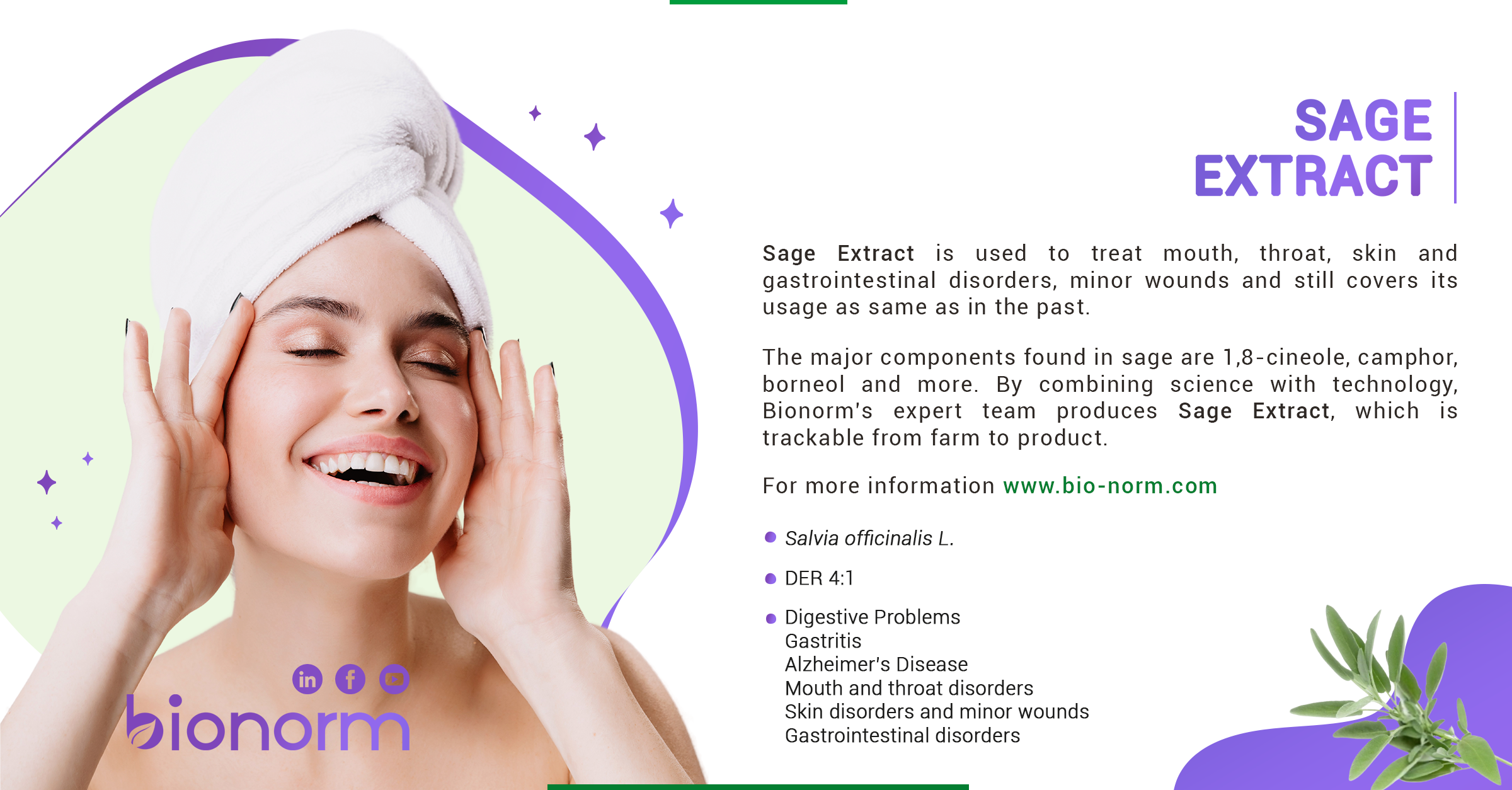
Sage Extract
Salvia officinalis, also known as sage, belongs to the Lamiaceae family. It is native to the Middle East and Mediterranean regions. Salvia officinalis is a perennial, evergreen shrub with a height on average of 40 to 50 cm but can reach up to 100 cm. The leaves are greyish-green, oval with 1-4 cm diameter and 4-10 cm long. The source of the aromatic odour is the secretions on the lower surface of the leaves. The violet flowers are found in clusters. (1)
Medicinal Usage
The medicinal usage of sage extract has been discussed in some scientific studies. In a clinical study in which female volunteers took part, it was observed that using sage extract reduces pigment spots on the face and skin response to irritants; therefore, it is recommended for sensitive skin. (2) In another clinical study, erythema caused by UV exposure is reduced, and it is proved that sage extract can be used to treat skin disorders. (3) Additional usage of the sage extract is stated in a study published in 2018. It is a result that sage extract might be used as an inhibitor of digestive enzymes such as lipase, α-amylase and α-glucosidase. (4)
Chemistry Behind
Sage extract is rich in flavonoids and terpenoids, especially in ursolic acid, which is responsible for anti-inflammatory and anti-melanogenic activities. Keratinocyte-melanocyte interaction influences skin sensitivity and pigmentation, and sage extract modulates keratinocyte function by reducing melanin production in the keratinocyte-melanocyte coculture model. (2) Furthermore, sage extract can be used for digestive problems due to its carnosic acid content. (4)
References
- Demet Altindal, Nüket Altindal, Chapter 81 – Sage (Salvia officinalis) Oils, Editor(s): Victor R. Preedy, Essential Oils in Food Preservation, Flavor and Safety,Academic Press, 2016,Pages 715-721, ISBN 9780124166417
- Sage (Salvia officinalis) extract enriched for ursolic acid clinically reduces skin sensitivity to irritants and lightens the appearance of facial hyperpigmentary spots, Journal of the American Academy of Dermatology, Volume 79, Issue 3, Supplement 1, 2018, Page AB252, ISSN 0190-9622
- Reuter J, Jocher A, Hornstein S, Mönting JS, Schempp CM. Sage extract rich in phenolic diterpenes inhibits ultraviolet-induced erythema in vivo. Planta Med. 2007 Sep;73(11):1190-1. doi: 10.1055/s-2007-981583. Epub 2007 Aug 23. PMID: 17713873
- Pınar Ercan, Sedef Nehir El, Bioaccessibility and inhibitory effects on digestive enzymes of carnosic acid in sage and rosemary, International Journal of Biological Macromolecules, Volume 115, 2018, Pages 933-939, ISSN 0141-8130

